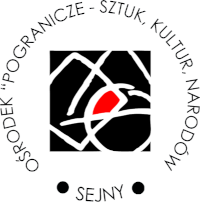Did the woman continue along the path which the older monk had showed her? Was she able to return the gift she had received from him? Or did she become isolated because the behavior of the younger monk bred in her a dislike for religion, men or strangers? She might have as well forgotten all about the event never noticing any connection between the assistance she received from a stranger and her own indifference towards others, those in need. Or, even if she supposedly had felt such a connection, she might have not been able to face it, repressing it as a taboo forced by her living conditions, social environment, survival anxiety or other circumstances? And the monks: Did they remain friends? Did the older monk get expelled from the order? Did his closest ones see him as a wise man or just a traitor? What was the life’s path of the younger monk? Was it filled with remorse and dialogue with others, or hatred and desire for revenge? The realities of the age of increasing cultural conflicts suggest radical dramatic scenarios including use of violence, exclusion, public lynching, and eruption of low instincts. Did the action determining the identities of the three characters open a process of continuous identity formation or did it enclose their lives within permanently established and intransgressible limits? How, and perhaps, what identity builds coexistence in the contemporary world?
The question of the art of living together unlike the question of individual truth or freedom targets the very core of the story of coexistence. Therefore, we should turn our attention now to what would happen next in the lives of the protagonists of our drama occurring on the borderline of the encounter with the Other man/Other woman, and explore the possibilities of overcoming divisions born as a result of the experience of the encounter.
Clearly, before their meeting with the stranger the monks had been travelling together, sharing the road, their faith and friendship. The woman was alone and had not previously been subjected to a refusal of assistance or rejection of a gift from a stranger. It was the meeting at the broken bridge that made their paths cross, breaking old ties and establishing new ones. To cross the river they had to build an invisible bridge, one that was full of tension and interdependencies. Yet can we say for sure that, given what happened at the river, they were able to coexist on the other side? We might obviously assume that they would go their separate paths and never become neighbors. In this way, just like the old monk left the woman on the other bank, we could leave behind a tangle of difficult questions and interpersonal encounters. But making such an assumption only allows us to temporally evade questions that keep returning and are rooted in our everyday existence, calling for practical solutions.
Something made both the two monks and the woman continue their journey, become migrants in need of a crossing. This is a sign of the times of globalization, but also touches upon the truth about man in general. “I wish that ship, the Argo'd never spread its sails and soared / between the slate-grey Symplegades, to Colchis”. But it did soar, and the plea of Medea’s nurse opening Euripides’ tragedy about the consequences of travelling beyond the limes of the known world was all in vain. The thousand-years-old recurrent plea to stay at home where everything is safe and familiar. In vain. Thresholds of homes and gates of homelands are crossed, bridges are broken and rebuilt, and life in a multicultural society is an everyday experience of growing numbers of people. Nothing, no visa regimes or strengthening of defensive walls will ever change the fact that cultural boundaries move together with the people who bring them into their new communities. The barriers built on the external borders, whether check points or gate guards are not able to deprive or free people from their cultural boundaries. Moreover, even when being able to deal with them alone, by finding inner strength to cross them or leave them behind, our coexistence with others in a community will make us struggle with them continuously. The older monk could eventually "break free" from the woman by living in seclusion. However, assuming that his path and that of the young monk’s are likely to cross in the future means that the woman will continue to remain part of the latter’s life because of the presence of the man who reacted to the encounter differently than he would. Let us say it again – we could separate them, supposing they would never meet again. But that would never bring us closer to the truth about coexistence. By coexisting with others in multi-cultural communities, we experience the reality in which the lives of the three characters intertwine.
Let us now look at coexistence by aligning it with the thinking of Józef Tischner. This philosopher and Catholic priest would never have agreed to any character from our story be left alone – the woman on the one bank, the young monk on the other, or the older monk in his seclusion and lofty though lonely wisdom. Tischner would rather have found him a place at the community table.
All text attached

